10 People Who Show That Kindness Isn’t Weakness—It’s a Quiet Superpower

Mirror-check: you’ve got your beige parka on. Your chisel is packed. And your overnight plane ride to Saudi Arabia is booked. You know what this means, right? Unfortunately, you weren’t cast in the remake of Dune. It just means that you’re ready to go explore the world’s largest desert areas in the hopes of uncovering prehistoric secrets about our ancestors.
Let’s get one thing straight. If you ever thought that deserts were empty spaces, think again. They might be filled with sand as far as the eye can see, but they also hold a lot of history. You know...because before humans settled down in cities and towns, we were nomadic people. And we traveled all around the globe looking for food, water, and shelter. So we had to come up with some interesting stuff to survive.

Like this thing that was found in the desert of Saudi Arabia. Do you have any idea what this could have been? Over many years, scientists have discussed the origins and use of huge structures such as these ones. It seems our Neolithic ancestors were way smarter than we gave them credit for! They didn’t spend all their hours around the fire carving weapons out of stone. No!
They were also practicing their architectural skills. These huge stone structures are called “desert kites.” Because if you look at them from a distance, well, they sort of look like kites. Archeologists have arrived at the consensus that these kites were used to lure animals in. This way, it would make it easier for our ancestors to guarantee their week’s food. But that’s not all.
Take a look at these monolithic structures right here. They show us that our ancestors probably drew on rocks the blueprint of what they were going to build on the ground. Just like modern-day architects. Desert kites could be miles long, so they drew out a plan before actually building them. The most surprising feature of all is that these kites were built even before things such as Stonehenge.
We’re talking around seven thousand to nine thousand years ago. Over the last decade, scientists have been able to identify over six thousand desert kites spread across the Middle East and West and Central Asia. If you don’t think this huge, try building something this large, without the help of any drones. It looks like a pretty difficult feat to me.
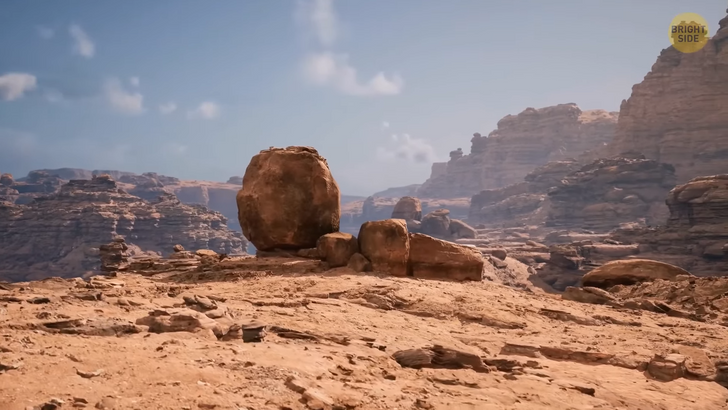
And apparently, Saudi Arabia’s desert is filled with more amazing things. Scientists have found mysterious stone structures that are older than the Pyramids of Giza, in Egypt. So of course, you can’t wait to go check that out. Can we all agree that carrying around heavy rocks to build a Pyramid without the help of modern technology sounds absurd? I mean: how on Earth did they do it?
Now, imagine turning back the clock about two thousand years into the past, and finding humans that built similar gigantic structures in isolated areas. Take a look at these so-called “mustatils”. They are rectangular structures built from piled-up stones, found over seventy-seven thousand square miles. Some archeologists believe that these monuments were used for ritualistic purposes. Maybe processions of some kind, where people would walk from one end of the plateau to the other. I’d be down for that!
Now, let’s move on to another deserted area. We’re entering the world-famous Sahara desert landscape. Isn’t it beautiful? Here, you’re about to unravel an ancient mystery. Something that took years for researchers to solve.
Fun fact: the Sahara desert is the world’s largest hot desert. It spans over three million square miles. Which would be like putting a thousand times the country of Hawaii next to each other. We say it’s the largest hot desert because the world’s largest desert area is Antarctica. But we all know temperatures over there are freezing — not the typical image of when we think of a desert.
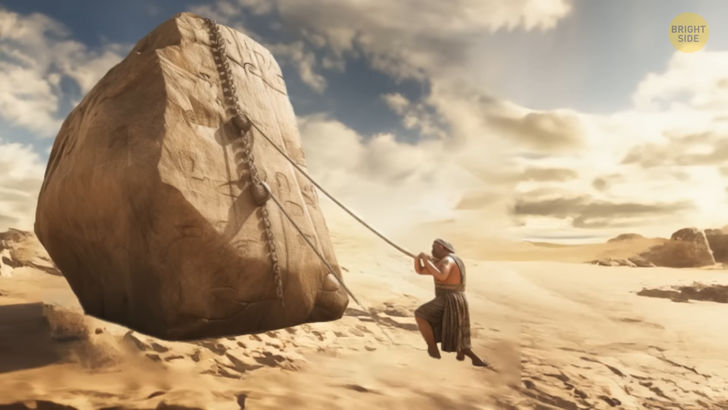
Deep into the desert, near the Algerian town of Foggaret et Zoua (Fou-guh-REH eh Zoo-AH), something strange was found. For decades, these tiny dots appeared on images of Google Earth, but nobody could explain what they were.
Some scientists were sure that these circles are the result of oil activity in the region. Others guessed that these were ancient Foggaras (Fuh-GAH-arr-S or ancient water wells. There are dozens of them, stretching for miles and miles in a straight line. The strange thing is that they are always far away from any town, road, or human activity in general. So what was or is their purpose?
If you had to take a guess, what would you say? Remember we talked about how our ancestors had to be creative in order to survive in the desert? Let’s try to walk in their shoes for a minute. Imagine you’re a nomadic hunter-gatherer living in a desert area. You spend your days basking in the hot sun, trying to count all the grains of sand around you.
But you also need to eat. And drink water. But how on Earth do you get water in a desert? Sure, you can hope to keep running into Oasis every week or so, but that seems a bit risky, doesn’t it? That’s why North African people invented the so-called Foggaras.
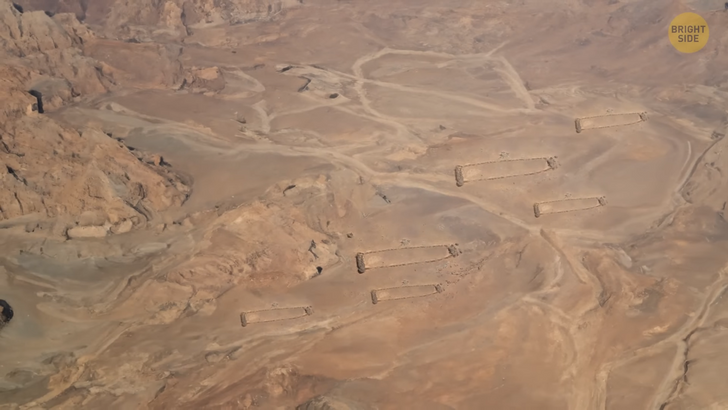
The Foggaras (Fuh-GAH-arr-S) are a two-thousand-five-hundred-year-old irrigation system. Locals would dig deep wells in elevated areas. Wells deep enough to tap into underground water. Then, they would dig parallel shafts at regular distances. This way, the water would flow from the main well, down into all the shafts and irrigate entire areas.
Travelers could stop by the shafts and quench their thirst. They could also raise livestock and tend to crops. Pretty clever, huh? As much as these holes did look like Foggaras, a little bit of research would show you that they are not. You see, these shafts were built in a line and not in a circular shape like the ones we’re looking at now.
So maybe it has something to do with the second option? Maybe these desert holes were related to oil activity in the region? Let’s have a look at the holes up, close, and personal. From Google Earth, they don’t seem that big, but in real life, they are huge craters. The tip to uncovering what they are is hidden beneath the sand. If you were one of the researchers originally uncovering the truth behind this mystery, you would have found something unique hidden in the sand: old dynamites and vintage sardine cans.
Putting the pieces of the puzzle together, scientists found that these sardine cans were a model from the nineteen-fifties and nineteen-sixties. It seems that entire teams from that decade would camp out while they surveyed the area for oil. And what about the dynamites? These were used for seismic surveying. This is an old technique, used to identify if there is oil and gas beneath the Earth’s surface.
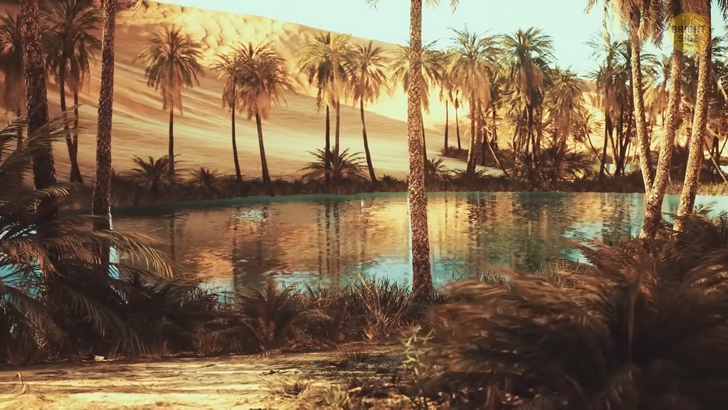
Still in North Africa, you find out about another desert mystery worth exploring. Near the city of Tiaret, southwest of Algeria’s capital, one runs into thirteen peculiar monuments. These structures are also called Jedars, and yes, I am aware of how much that may sound like a Star Wars reference.
They are pyramid-like in their shapes, and as far as scientists know they were used as final resting places for the people who lived in the region. Can you guess who these were? Most likely the Berber nomads. And since we’re talking about ancient stuff, they were probably built between the fourth and seventh centuries CE.
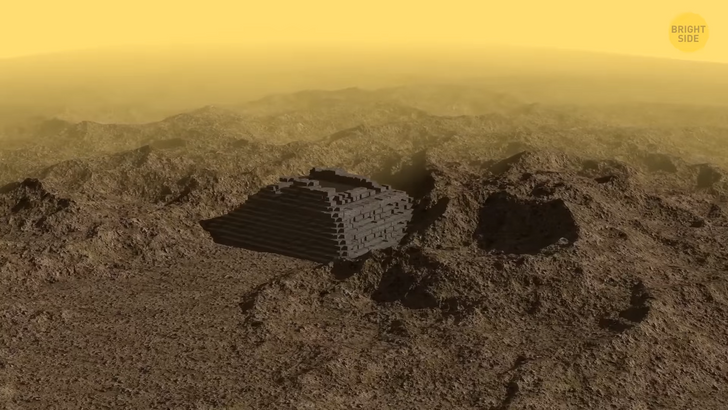
Once scientists began to explore the insides of these monuments, they found they were pretty big inside. They found large underground vaults, chambers, and labyrinth-like corridors that gave way to over twenty compartments. It could take you up to two hours to walk around in them.
And apparently, our ancestors also used its walls to depict images of animals and hunting scenes. There’s no definite proof of what these Jedars were used for, though. This is so neat, huh? I’m sure that our world’s desert is filled with many more mysterious.











